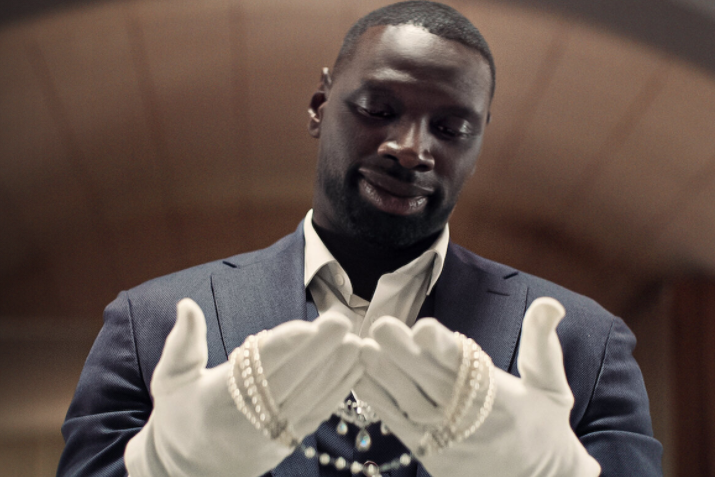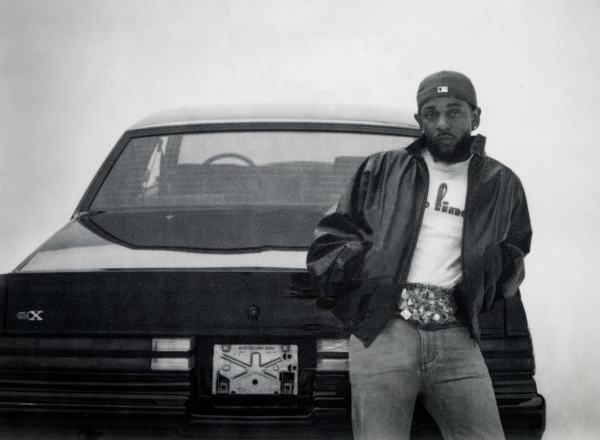‘Lupin’ tackles modern issues with a century-old character
George Kay’s new show “Lupin” reached No. 3 on Netflix in the U.S., which is rare for an international release. Perhaps for the first time, American audiences are being introduced to a character that the French have known and loved for more 100 years.
In 1905, French author Maurice Leblanc wrote a collection of eight stories titled “Arsène Lupin, Gentleman Burglar.” These stories and the character of Lupin gained the same popularity in France as Arthur Conan Doyle’s “Sherlock Holmes” stories did in the U.K. and elsewhere. Still, Lupin failed to gain significant recognition outside of France—until now.
Set in modern-day Paris, “Lupin” reimagines Leblanc’s stories through the journey of Assane Diop (played by Omar Sy), a professional “gentleman thief” who sets out to get revenge on the Pellegrinis, an wealthy family that framed his father for stealing Marie Antoinette’s diamond necklace. Twenty-five years have gone by without any repercussions, but when Assane learns that the Pellegrinis are auctioning off the necklace at the Louvre, he immediately begins hatching a plan to stage a heist on the night of the auction.
Assane appears to successfully accomplish his goal midway through the first episode, but the game between Assane, the Pellegrinis and the Paris police has just begun when he walks out of the Louvre unscathed, necklace in hand.
Assane chooses to employ Lupin’s style and methods because he associates the character with his father Babakar, who gave him Leblanc’s collection of stories when Assane was 14 years old. However, as the show makes clear, Assane is not actually Arsène Lupin—but a very extreme and accomplished fan.
Throughout the show, Assane relies on his ability to quickly and convincingly change his identity to suit the needs of the situation. For example, he carries out the first phase of the Louvre heist as a janitor but transforms into a multimillionaire when it comes time to actually purchase the necklace at the auction. He does not use advanced technology or magic to make himself believable—he simply pays a great amount of attention to detail, accounting for the inevitable possibility that something will go wrong, staying calm when it does, and remaining hyper-alert so that he can always stay one step ahead of those who are trying to catch him.
The action scenes, during which Assane seems to be trapped but suddenly reveals that he had been slowly gaining the upper hand all along through a series of subtle actions he had taken that the audience was not shown the first time through, are easily the highlights of the show. These scenes are accompanied by the show’s theme, a fast-paced hip hop instrumental, making them all the more captivating to watch.
But perhaps even more impressive than his brilliant character work and adept pickpocketing is Assane’s ability to use emotional manipulation to get what he wants. For example, during a flashback scene, Assane poses as a police officer at a burglary scene and not only convinces the other officers to let him go upstairs and search the scene but also persuades the wealthy homeowner (who describes him as a “gentleman”) to entrust him with the possession of her valuables for “safekeeping” in case the burglars come back.
Assane also uses race as a manipulative tool. As a Black man targeting the white upper class, Assane realizes that he stands out, and uses this to his advantage. He aggravates Police Commissioner Gabriel Dumont to the point where Dumont ends up saying something racist in public, and as a result, must go along with Assane to avoid persecution from his peers.
In another instance, Assane is able to switch places with another man in prison, while the prison guard, who had just escorted his cousin into the room, escorts Assane out without suspecting anything. Through flashback, the show depicts the ways in which racism and classism impacted Assane from a young age through the Pellegrinis’ mistreatment of his father as well as his personal interactions with the Pellegrinis, so it is empowering for Assane to be able to exploit these same tendencies to his advantage in the present day.
Although the show’s writing is not one of its strongest points overall, Assane’s character is fairly well developed, in large part due to the show’s portrayal of his changing relationships with Claire, his ex-wife, whom he met and began dating in high school, and Juliette Pellegrini, the daughter of the family Assane seeks revenge against, who also maintains a complicated relationship with Assane. Juliette, especially, is drawn to Assane’s trademark charm, so she feels especially manipulated when Assane leads her on.
One other character of interest is Youssef Guédira, a detective for the Paris police who is the first to realize the connection between their main suspect and the fictional Arsène Lupin. As Guédira scans the pages of Leblanc’s novel for answers, he becomes more and more convinced that the suspect is imitating Lupin.
However, the other detectives at the station brush him off repeatedly, laughing at the idea that this could even be a possibility, and as they do, Assane continues to commit Lupin-esque crimes and get away with them. Over the course of the show, the dynamic between Guédira and his fellow detectives becomes especially irritating to watch, as they disregard him as the evidence for his theory continues to mount.
I would recommend “Lupin” to anyone who is a fan of crime dramas, such as the James Bond movies or BBC’s “Sherlock,” or anyone who is looking for a quick yet intriguing watch. The show is quite fast-paced, features Hollywood-style action cinematography and a masterful lead performance by Omar Sy.
Grade: A-
Vikram Jallepalli is a senior at Pelham Memorial High School. Writing for the Examiner is his first role in journalism. He performs in Sock’n’Buskin...













